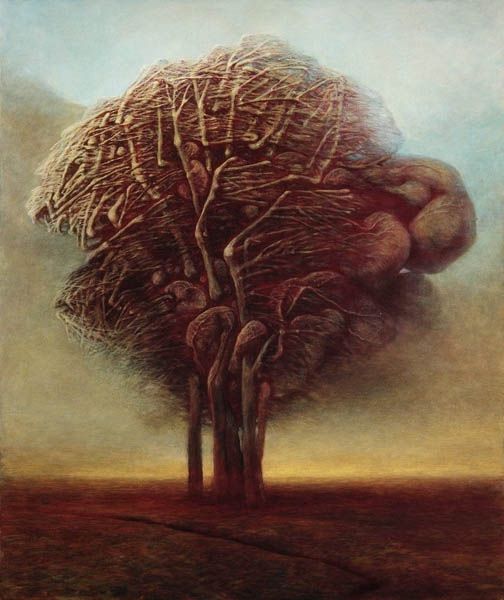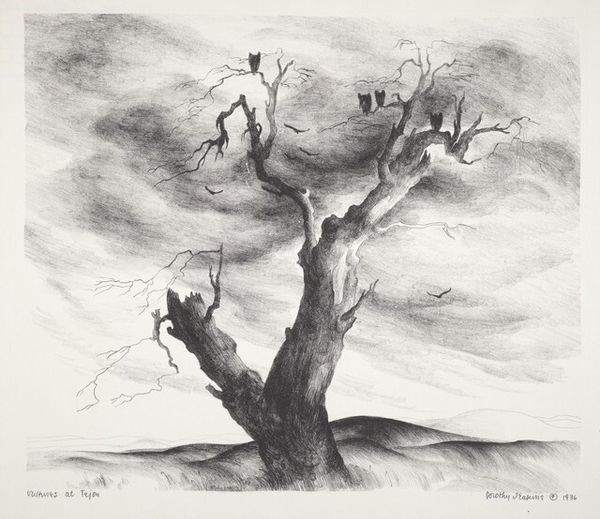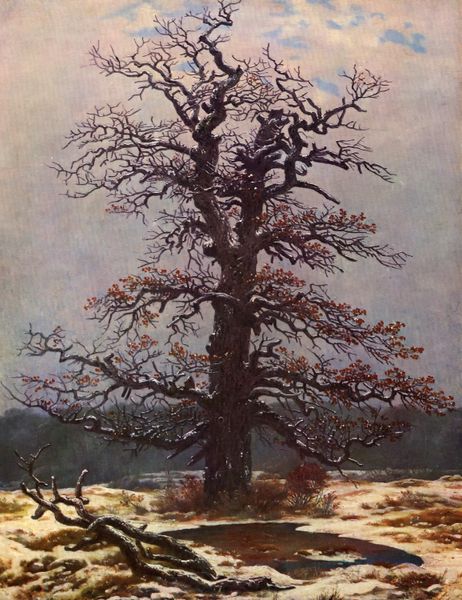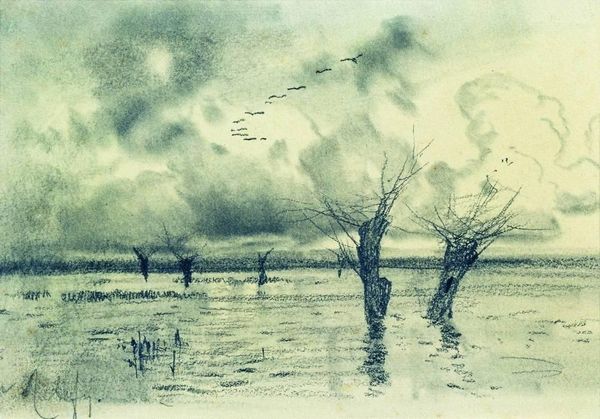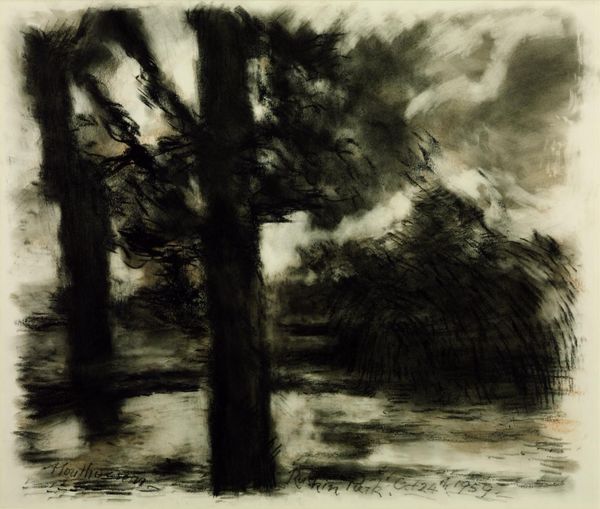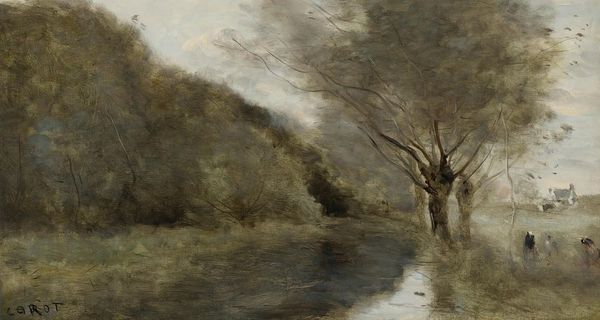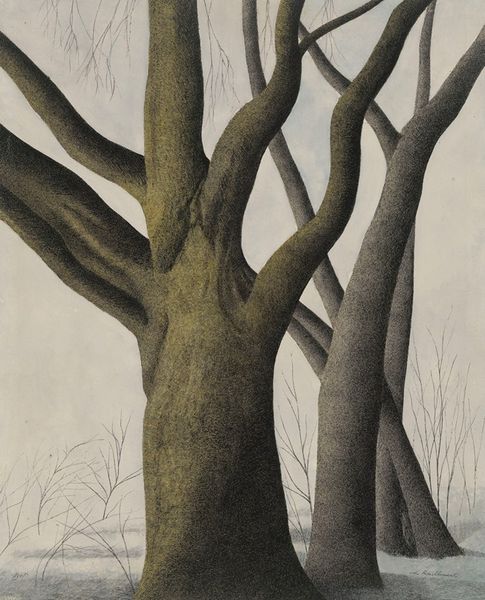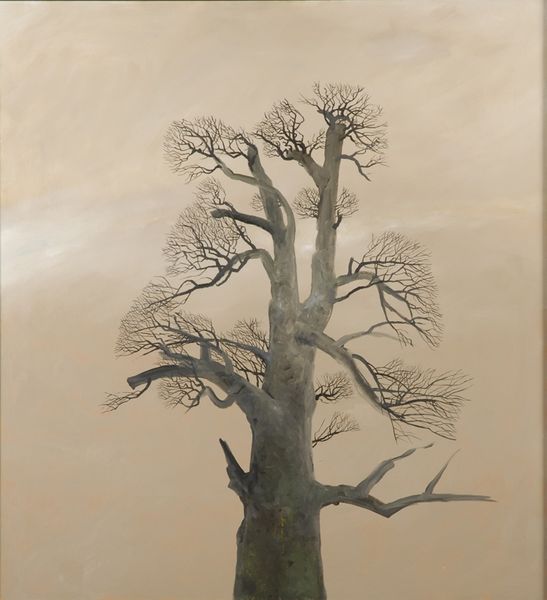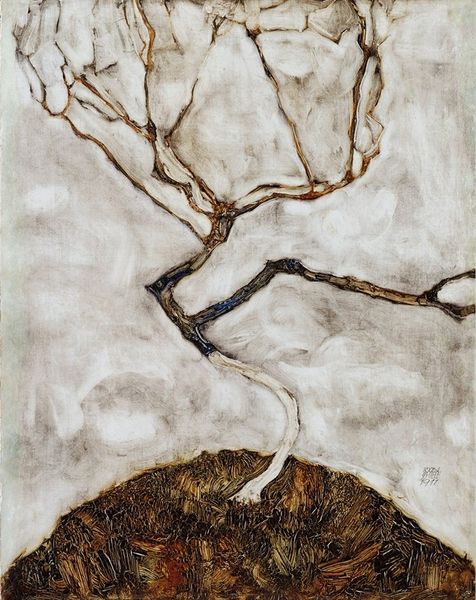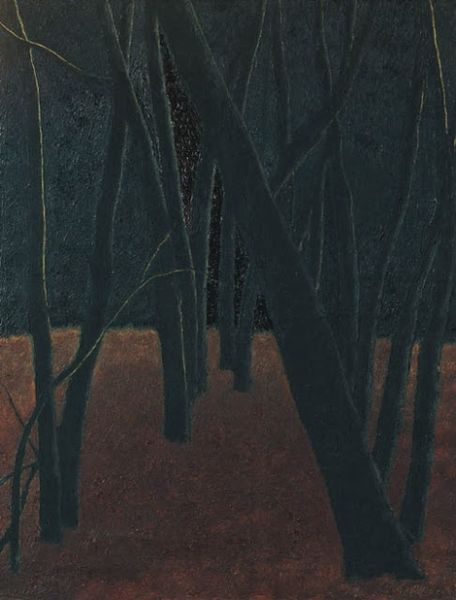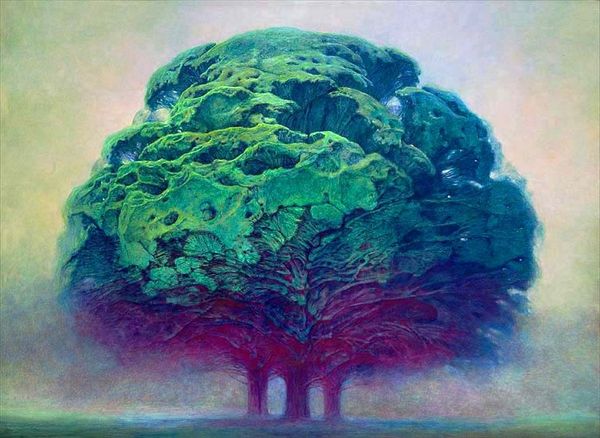
drawing, charcoal
#
drawing
#
landscape
#
charcoal drawing
#
figuration
#
charcoal
#
surrealism
Copyright: © The Historical Museum in Sanok (Poland) is the exclusive owner of copyrights of Zdzisław Beksiński's works.
Curator: Here, we see an Untitled work by Zdzislaw Beksinski, rendered in charcoal. Beksinski is celebrated for his distinctive and surreal figuration often within landscape settings. Editor: It evokes an unsettling, almost mournful atmosphere, doesn’t it? The scale of that overhanging mass of branches is overwhelming. What draws my eye is the tension between the stark, bare trees and that muddy, textured ground below. Curator: I think you’ve hit on something there. The materiality of the charcoal allows for incredibly subtle gradations of tone, creating both texture and a tangible sense of depth, but the question I have is why this image? What is Beksinski aiming to illustrate about labor in his art, when the mark-making here is the star. Editor: Considering the context, I’d say the mood ties in heavily to themes surrounding the trauma of the holocaust within a Polish societal scope. This imagery speaks to a world after disaster, a loss that has left lasting marks not just on the environment but on our collective conscious, a visual manifestation of despair. Curator: Perhaps. However, consider the intense physicality of charcoal as a medium, ground from organic matter. This labor connects us directly to both the means of production but the materiality and consumption too: the charred wood transformed. The tree is itself rendered as both strong and incredibly vulnerable, so how might the relationship between the tree, medium, and the social issues change our reading of the artist and their labor? Editor: True, by interrogating the interaction of medium and material within art-making practices, we gain another viewpoint. Though, for me, I’m drawn to reflect upon how individuals process feelings when confronted by histories marked with trauma. How can something like drawing act as a way of addressing that, but it’s also deeply political by reflecting human rights issues as the work appears to evoke human forms, a silent resistance on paper that transcends words. Curator: So, we’ve approached this enigmatic drawing from distinct perspectives. Hopefully we’ve highlighted the powerful intersection of art and its materials, its production, and what societal narratives surround it. Editor: Absolutely, reflecting how something seemingly simple becomes potent when read as part of conversations concerning identity, grief and the societal frameworks surrounding the making of it.
Comments
No comments
Be the first to comment and join the conversation on the ultimate creative platform.
